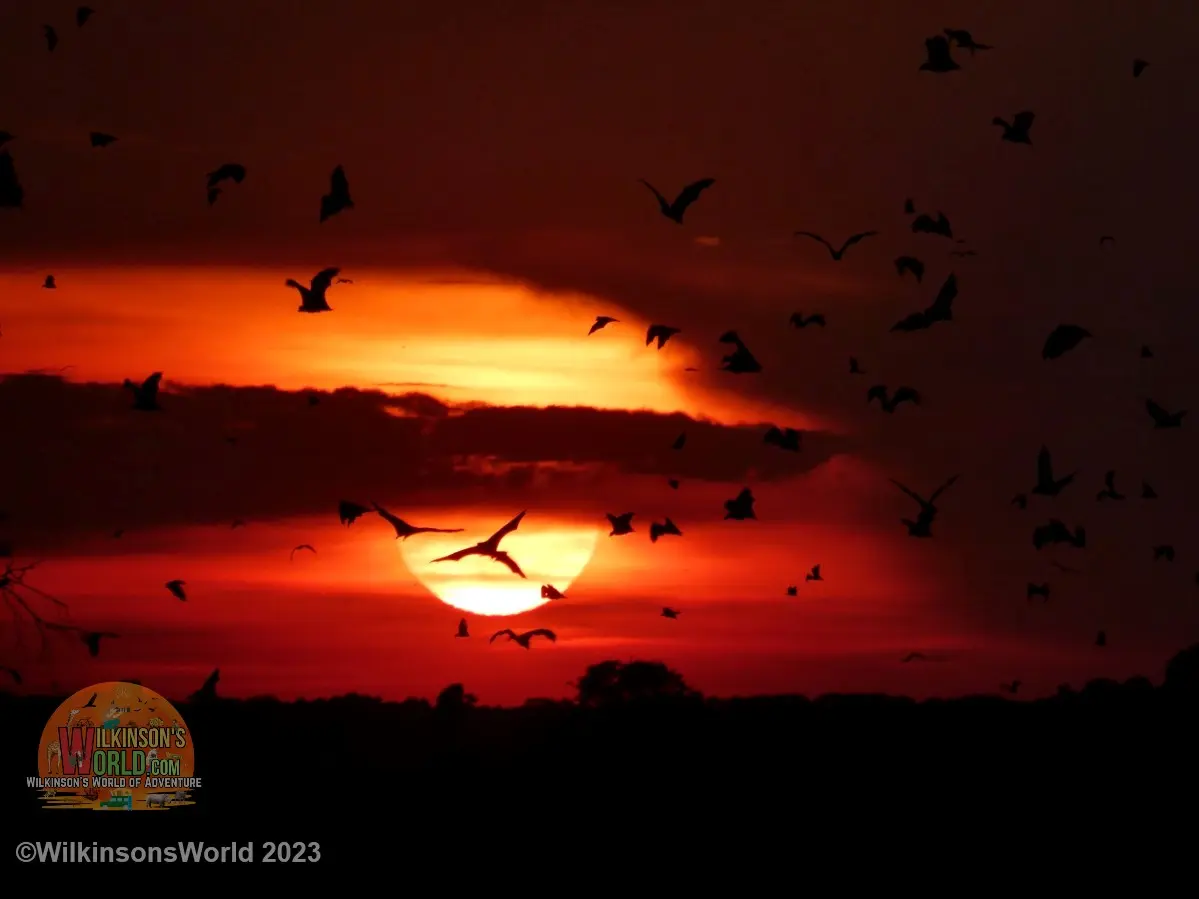If you’re planning a safari to Africa, you might want to do yourself a big favour and visit the Kasanka National Park. Nestled in the heart of Zambia, this little park, which covers an area of approximately 450 square kilometers, is a true gem. Established in 1972, it lies within the Bangweulu Basin, which forms part of the Central Zambezian Miombo woodlands ecoregion, with wetlands, grasslands and forests creating an ideal habitat for wildlife and animals. The biggest attraction of this park, however, is the annual bat migration which takes place between October and November, drawing visitors and researchers from around the world to witness this true spectacle of nature.
One of the largest mammal migrations on earth
Every year between 8 and 10 million enormous fruit bats (Eidolon helvum) descend upon a small area in the park, transforming the skies into a wondrous moving canopy of wings. Forget all those myths and weird stories you’ve ever heard about bats and be open to experiencing one of the largest mammal migrations on earth for a few brief hours.
Migrating fruit bats
It’s an arduous journey for the migrating bats, who come from as far afield as Angola and the Democratic Republic of the Congo. They fly at night and arrive at Kasanka at dawn, settling down in the Mushitu swamp forest. Their diet consists of many varieties of wild fruits, the most abundant in the park being the Masuku fruit (Diospyros whyteana). The bats eat up to twice their weight every night and during the two months that they are there, they are estimated to consume over a billion fruits. That is one big feast! They play a huge role in regenerating forests by dispersing seeds and pollen during their eating sprees. Many of the bats are pregnant while at Kasanka, making use of the abundant fruit to sustain them during the gestation period and after.
The timing of our visit was perfect as we were able to spend two evenings observing the bats and doing some birding and game-viewing during the day.
Our first evening was a bit of a wash-out as our sighting was curtailed by a spectacular thunderstorm that had us scurrying down the steps of the wooden BBC platform to avoid being struck by lightning.
Observing bat spectacle
We were fortunate that we had booked for two nights because the second evening’s viewing gave us both an amazing sighting and a spectacular sunset. Their dark silhouettes against the red sky looked like a scene from a Halloween movie. It is not only a visual wonder but the area resounds with the sound of their beating wings and cacophonous chatter.
While we were there, a professional film crew was videoing the bats using a drone, which enhanced our experience as it drove them closer to us. They must have had special permission because drones are mostly banned in national parks.
Expanding their search for food
As the fruit in the immediate vicinity of the forest becomes scarce, the bats fly up to 100 kilometers at night in search of food. They return in the early morning so if you are up to rising at an ungodly hour, you can watch them come and settle in the treetops for the day. The trees literally buckle under their weight as they scramble to find a spot for their day’s rest.
Diverse wildlife at Kasanka
The park boasts over 400 bird species. We picked up a few lifers, but another thrill for us was when our bird guide led us to an anthill that was inhabited by an enormous African Python. Unfortunately, it was a very shy python that made a rapid retreat into its home, so we weren’t able to get a photo of it in it’s entirety.
What an amazing experience our visit was. Well worth the trip up there. Our campsite was situated in a beautiful woodland close to the location of the bats.




Recent Comments